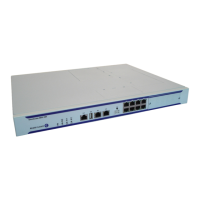Subscriber Services
7750 SR OS Services Guide Page 93
only be associated with a single LSP in a given SDP. All subclasses will be assigned to the same LSP
as the parent forwarding class.
Default none
Parameters lsp lsp-name — Specifies the RSVP or static LSP to use to forward service packets which are
classified into the specified forwarding class.
multicast-lsp
Syntax multicast-lsp lsp-name
no multicast-lsp
Context config>service>sdp>forwarding-class
Description This command specifies the RSVP or static LSP in this SDP to use to forward VPLS multicast and
broadcast packets. The LSP name must exist and must have been associated with this SDP using the
command config>service>sdp>lsp. In the absence of an explicit configuration by the user, the default
LSP is used.
Default default-lsp-name
far-end
Syntax far-end ip-address
no far-end
Context config>service>sdp
Description This command configures the system IP address of the far-end destination SR-Series router for the
Service Distribution Point (SDP) that is the termination point for a service.
The far-end IP address must be explicitly configured. The destination IP address must be a SR-Series
system IP address.
If the SDP uses GRE for the destination encapsulation, the ip-address is checked against other GRE
SDPs to verify uniqueness. If the ip-address is not unique within the configured GRE SDPs, an error
is generated and the ip-address is not associated with the SDP. The local SR-Series may not know
whether the ip-address is actually a system IP interface address on the far end SR-Series.
If the SDP uses MPLS encapsulation, the far-end ip-address is used to check LSP names when added
to the SDP. If the “to IP address” defined within the LSP configuration does not exactly match the
SDP far-end ip-address, the LSP will not be added to the SDP and an error will be generated.
An SDP cannot be administratively enabled until a far-end ip-address is defined. The SDP is
operational when it is administratively enabled (no shutdown) and the far-end ip-address is
contained in the IGP routing table as a host route. OSPF ABRs should not summarize host routes
between areas. This can cause SDPs to become operationally down. Static host routes (direct and
indirect) can be defined in the local SR-Series to alleviate this issue.
The no form of this command removes the currently configured destination IP address for the SDP.
The ip-address parameter is not specified and will generate an error if used in the no far-end
command. The SDP must be administratively disabled using the config service sdp shutdown

